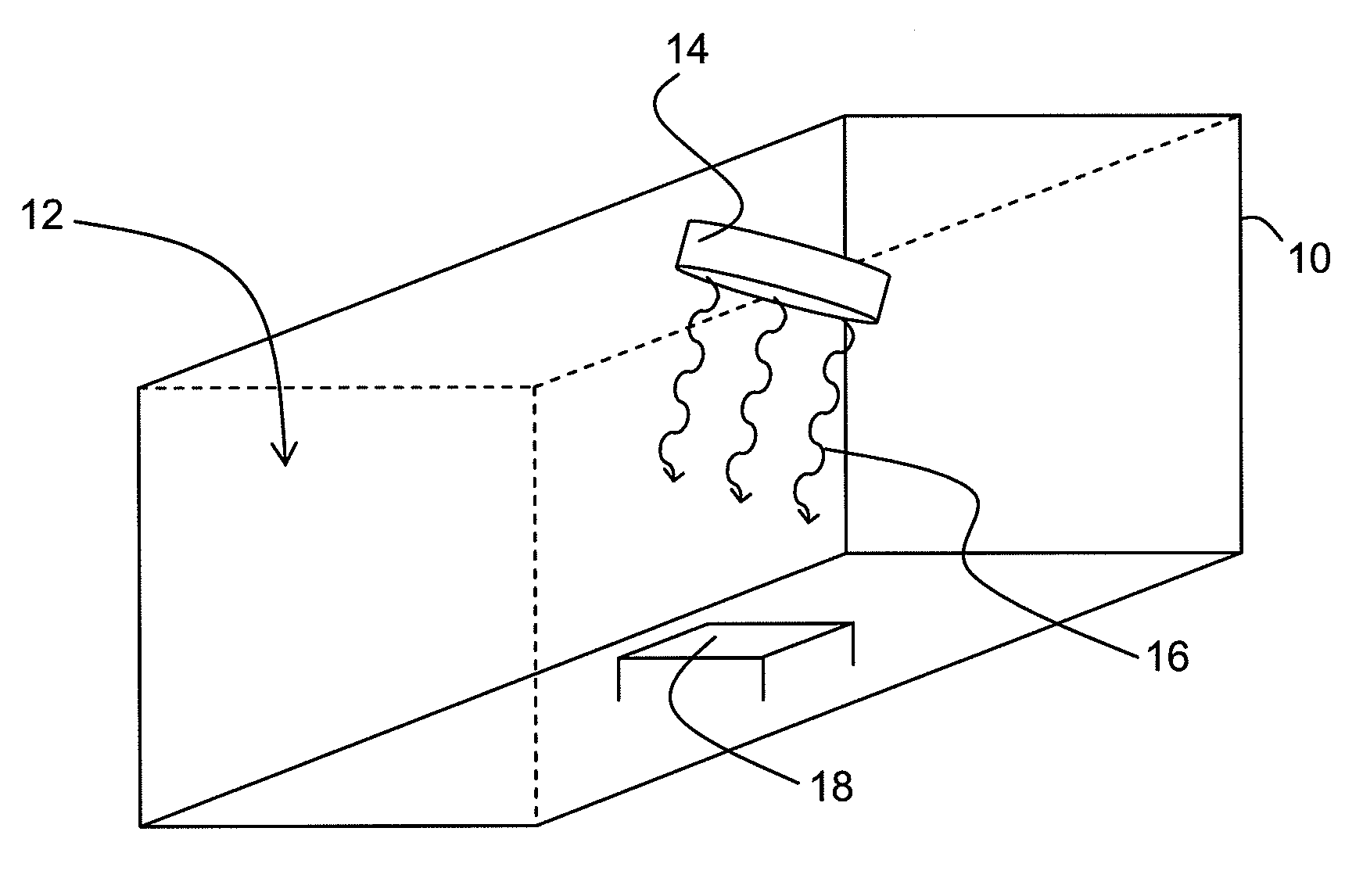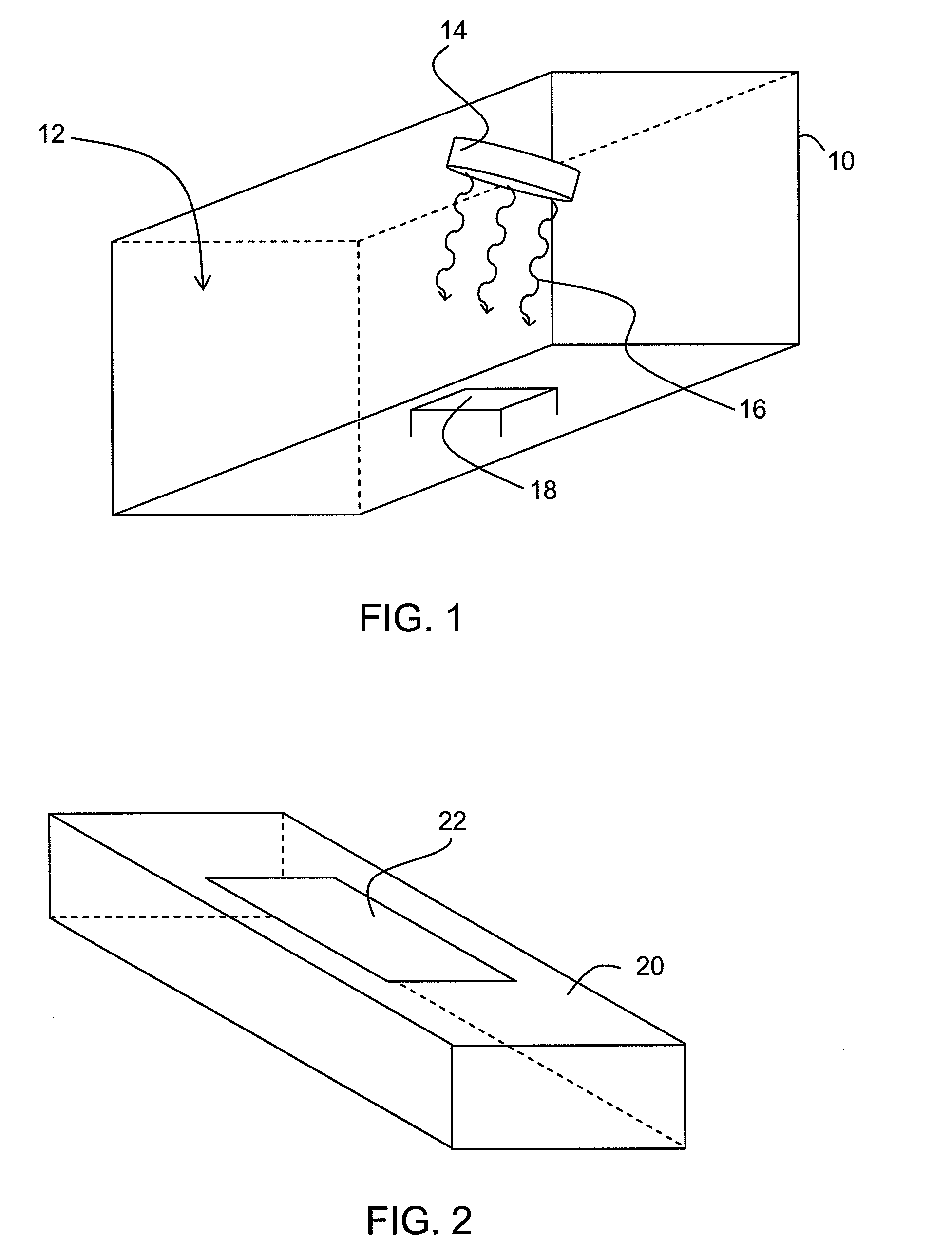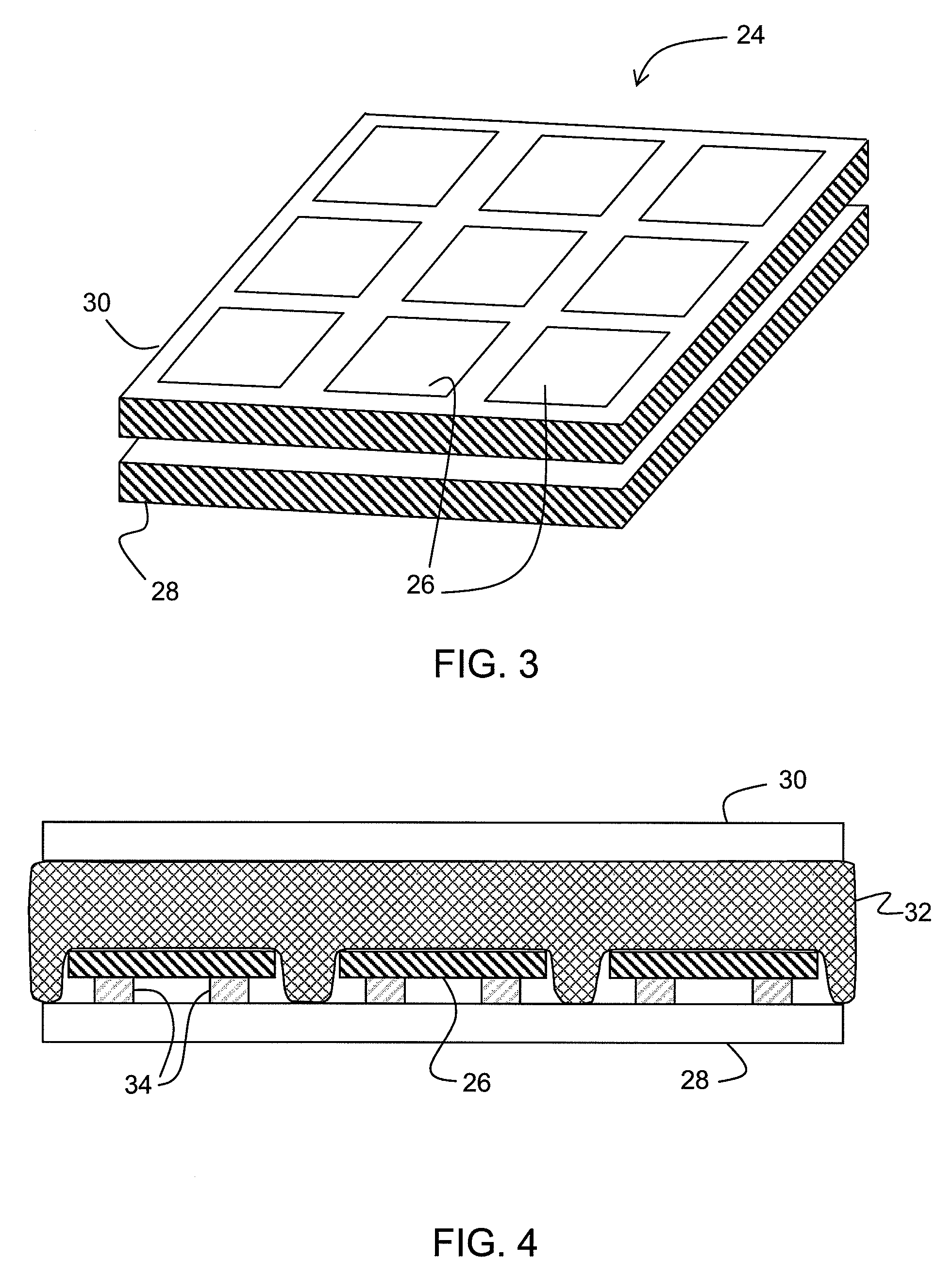Calibration method for solar simulators usied in single junction and tandem junction solar cell testing apparatus
a solar simulator and testing apparatus technology, applied in the field of solar simulator calibration, can solve the problems of large equipment requirements, large equipment requirements, and large equipment requirements of stable state solar simulators
- Summary
- Abstract
- Description
- Claims
- Application Information
AI Technical Summary
Benefits of technology
Problems solved by technology
Method used
Image
Examples
Embodiment Construction
[0044]Embodiments of the present invention provide a solar cell testing apparatus and methods of calibrating a light source used to simulate the sun in the solar cell testing apparatus.
[0045]Equipment utilized in the inventive solar simulator calibration procedure will be discussed first. FIG. 1 depicts an exemplary embodiment of a solar cell testing apparatus 10, which can be of any appropriate size and configuration for testing a variety of differently sized modules. In the interior 12 of the apparatus 10, a light source 14 such as a lamp is present. The light source 14 serves as a solar simulator; it has the capacity of providing light 16 as intense as sunlight. The light source 14 may be physically attached to a wall of the apparatus 10, as shown, or freestanding in the interior 12 of the apparatus 10. Power can be supplied to the light source 14 through a variety of means as well known in the art. A substrate holder 18 is positioned inside the apparatus 10 so that the light 16 ...
PUM
 Login to View More
Login to View More Abstract
Description
Claims
Application Information
 Login to View More
Login to View More - R&D
- Intellectual Property
- Life Sciences
- Materials
- Tech Scout
- Unparalleled Data Quality
- Higher Quality Content
- 60% Fewer Hallucinations
Browse by: Latest US Patents, China's latest patents, Technical Efficacy Thesaurus, Application Domain, Technology Topic, Popular Technical Reports.
© 2025 PatSnap. All rights reserved.Legal|Privacy policy|Modern Slavery Act Transparency Statement|Sitemap|About US| Contact US: help@patsnap.com



